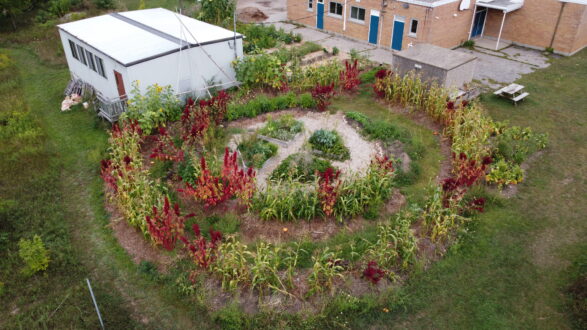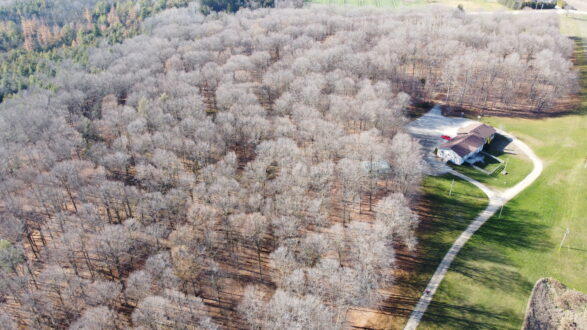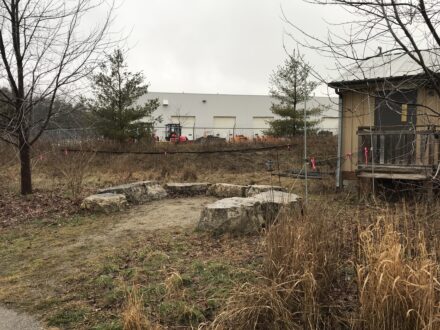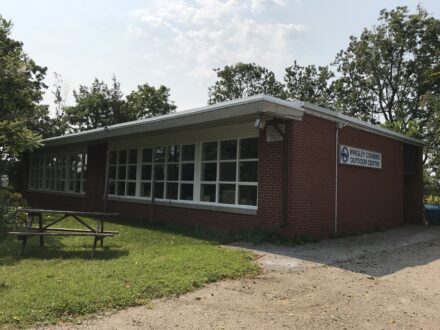Grade 1 –
Needs and Characteristics of Living Things / Heritage and Identity/People and Environments
Program: Maple Sugar
Understand the basic needs of plants, explore the effects of daily and seasonal cycles and determine their influence on syrup production from sugar maple trees.
*Camp Heidelberg and White Owl Native Ancestry Sugar Bush |
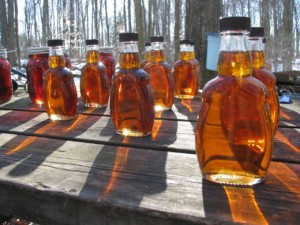 Part of the day’s production of syrup. |
| Picture |
Grade 2 –
Growth and Changes in Animals
Program: Animal Walk
Students go on a nature walk to investigate how animals survive in their natural habitat. During stops along the way, students participate in interactive games and activities, and collect, examine (and then release) small creatures. |
Grade 3 –
Growth and Changes in Plants
Program: Path of Plants
Students learn about plants by participating in a variety of hands-on activities during a nature walk. The program focuses on how the needs of plants are met in their natural habitat.
Early Settlements in Upper Canada
Program: Indigenous Studies
This program aims to paint a picture of a longhouse community. Activities focus on the relationship between First Nation peoples and the environment, and on the influence of Indigenous life on pioneer and modern cultures. This program also relates to Growth and Changes in Plants.
Program: Maple Syrup
Students explore past and present methods for producing “liquid gold”, and participate in activities involving measurement and tree identification. This program also relates to Growth and Changes in Plants.
Soils in the Environment
Program: Soils
Students will examine the soils in various habitats, looking at the components in each. The role of decomposers and the importance of composting will be examined. |
Picture |
| Picture |
Grade 4 –
Habitats and Communities
Program: Winter Birds
A variety of activities help students learn about birds, their habitats, structural adaptations, food-chain roles, bird classification, and the impact of humans on animal populations and the environment. During a hike, students observe and identify birds using binoculars, and feed chickadees.
Program: Pond Study
Students collect and identify pond invertebrates, and classify them according to their food-chain roles. They also collect data on pond plants and physical properties such as air and water.
Program: Habitats Comparison
Home Sweet Home – Students investigate how the needs of specific plants or animals (e.g., for food, water, shelter) are met in various habitats.
Measurements – Students collect data (e.g., temperature, wind speed, solar energy, soil moisture) related to plant and animal inhabitants.
Program: Honey Bees
This program offers a close-up examination of how bees adapt to living in a hive community. While visiting the hives, students explore how bees have designed and organized their community, and the roles they play within it.
Map, Globe and Graphics Skills
Program: Orienteering
Students develop map and globe skills through map orienteering.
|
Grade 5 –
Conservation of Energy & Resources
Program: Structures
Students will be introduced to different forms of energy, and the ways that energy can be harnessed and used in everyday life. Given a set of materials, students will be challenged to construct a shelter that conserves heat. Structures will be evaluated based on design, temperature, and level of group cooperation. This program includes one half day of either cross-country skiing or snowshoeing.
Program: Climate Change
Through role-playing (by the instructor), students will be presented with 4 different views of climate change. Working in booklets, students will evaluate each argument presented. This program requires follow-up at school to ensure that the arguments presented are properly deconstructed. This program includes one half day of either cross-country skiing or snowshoeing.
Canada and the World
Program: Orienteering
Students develop map and globe skills through map orienteering. |
|
|
Grade 6 –
Biodiversity
Program: Biodiversity Study
Spring and Fall programs focus on invertebrate life, while winter programs study vertebrate and tree diversity. In this program, students gain an appreciation of the diversity of life in Waterloo Region, and learn how groups are classified according to their characteristics. Spring and Fall programs include the collection, observation, classification and release of invertebrates. Winter activities depend upon weather and OEE site resources but may include: bird study, chickadee feeding, winter tree ID, tracking mammals in snow and/or snowshoeing.
First Nation Peoples & European Explorers
Program: Maple Syrup
This program examines maple syrup production methods from pre-European to present times. Students are given a historical overview of the importance of maple syrup production, and participate in a simulation to determine how well they could manage a sugar bush. |
Grade 7 –
Interactions in the Environment
Program: Instincts for Survival
This popular simulation is used to teach basic ecological concepts. Each student is assigned a local mammal with a specific role (e.g., predator, prey, herbivore, omnivore, carnivore). During the activity, students learn concepts about predation, competition, cooperation, reproduction, and food webs while having fun.
Program: Bird Study/Bird Behaviour and Ecology
Students delve into the world of birds by observing Black-capped Chickadees (birds often land on students’ hands), and participate in a long-term study of chickadee behaviour and population dynamics. Students work in small teams to make observations and record data that can be used in follow-up activities in class. When site and weather conditions allow we pair this program with a bird banding demonstration. Bird banding has been a critical tool for the study of birds for over a hundred years. During this program students get to hold a wild bird, listen to its heart beat, measure basic morphometrics and use a mist net. This special program is the only one of its kind in Canada. Our staff maintain all the proper training and permits to run this program safely for both students and birds alike.
Program: Radio Telemetry
In this activity students explore how animals interact with each other and their environment through the use of Radio Telemetry. In small groups students relocate 10 ‘individuals’ (pretend animals of our chosen ‘at risk’ study species) hidden at the centre. By mapping these locations students describe the habitat (forest, field, scrub, meadow, agriculture, urban, industrial) that this species prefers to occupy. Back in the centre the students use proportions to describe which habitats the study species occupies the most and we discuss what habitat preference is, what the species might be looking for, how human actions can eliminate preferred habitat, and how this knowledge helps us conserve biodiversity.
Program: Aquatic Interactions
Students work in groups to describe and record elements of the pond or stream environment. With the use of dip nets, students capture and observe the animal life, and describe both plant life and abiotic factors. This program develops an appreciation of aquatic life forms. Students also identify, classify, and sketch organisms. |
|
|
Grade 8 –
Patterns in Human Geography
Program: Urban Planning – Patterns in Human Geography
Given a map on which to plan a new community for 100 000 people, students are challenged to allocate space for housing, industry, commerce, farming, and the environment. Different models of land use are presented, and students need to decide which plans reflect their vision of a successful community. Teachers should allocate a few class periods for follow-up activities.
Earth and Space Systems
Program: Water Systems
Learn about water systems in Waterloo. How does groundwater work, why is it important, how do we manage it? In this three part activity, students will visit a local pond, creek or river to explore how water flows between surface and groundwater systems, use Groundwater flow models to see how water moves underground and then build water filters using common materials to emulate a stage of municipal water processing. In this activity students use seepage meters, piezometers, flow models, water filtration systems, as well as digital and chemical tests to determine how well their filters work. |
Grade 9 –
Science – The Sustainability of Ecosystems – Ecosystems and Human Activity
Program: Aquatic Ecology – Equilibrium of Complex Systems – a Pond study (Grade 9 Science)
Students work in groups to describe abiotic and biotic components of an aquatic environment. Abiotic factors measured include dissolved oxygen, carbon dioxide, temperature, pH, etc. Students use various resources to identify and classify organisms. Gathered data can be readily used in class.
Program: The Deal with our Trees (Terrestrial Ecology/Climate Change)
Learn about the complex ecology of forests, the biology of trees and what their role is in fighting climate change. In this activity students will count and measure trees in two locations, a pine plantation and a mature old growth forest. They will learn about species identification, differential carbon sequestration, evapotranspiration and photosynthesis, feedback loops and equilibrium, as well as how sustainable forestry (harvest)/silviculture (growing trees) can be part of the climate solution.
Geography – Livable Communities
Program: Waterloo in 2050
Climate change is a pressing environmental dilemma often discussed at scales that make the local implications abstract and/or intangible. To make climate change a local issue, we explore six examples of how climate change will affect Waterloo Region while hiking over the Galt Moraine, a local post-glacial landform. Discussions cover extreme weather, the spread of disease, biodiversity loss, social inequality/justice, and food insecurity.
Program: Protest Art
What can be done about climate change? This cross curricular program merges art, history, geography and science. Learn about the history of protest, social activism and the climate struggle. Apply artistic techniques to create meaningful statements on the topic of climate change.
|
|
|
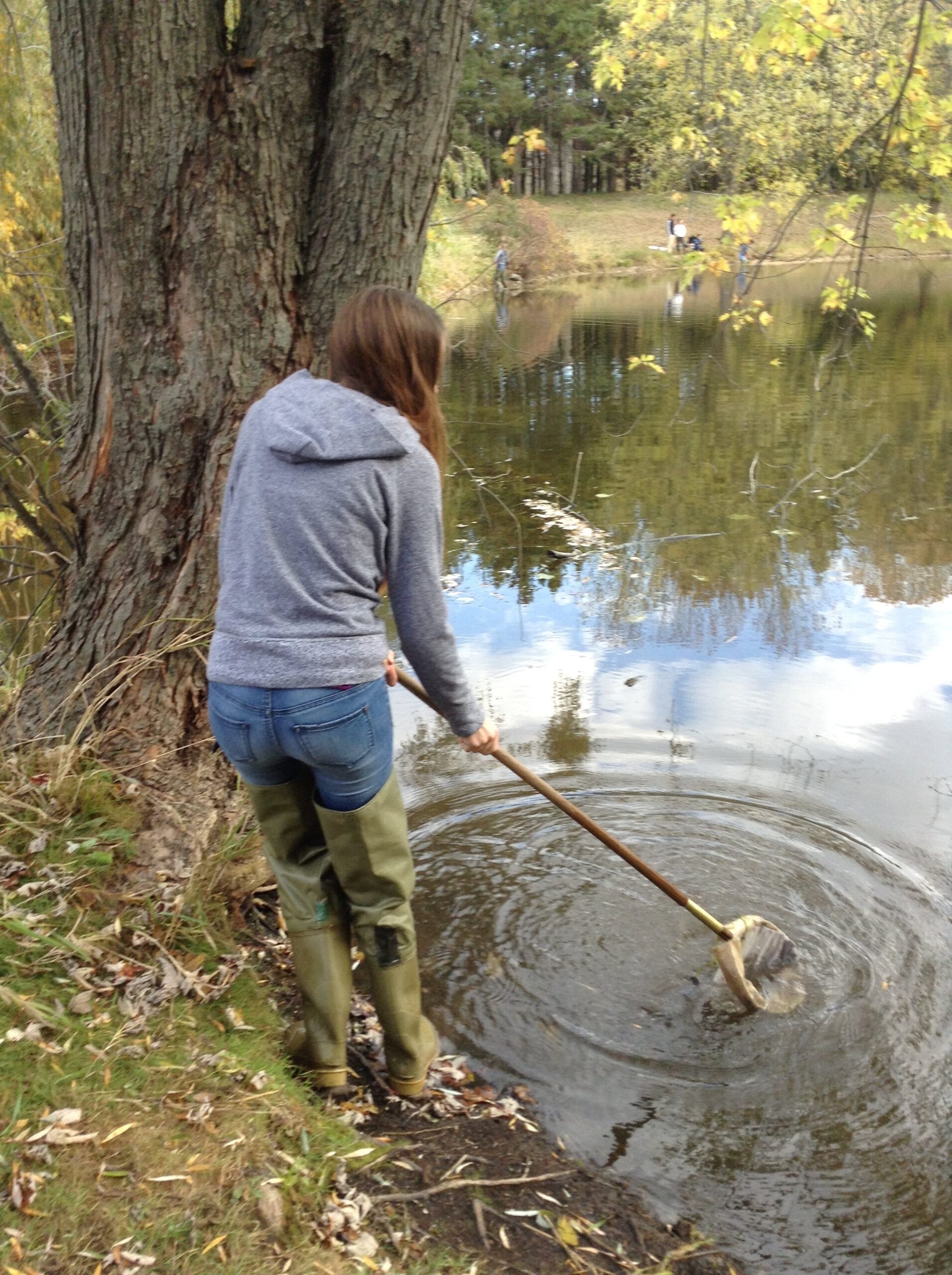
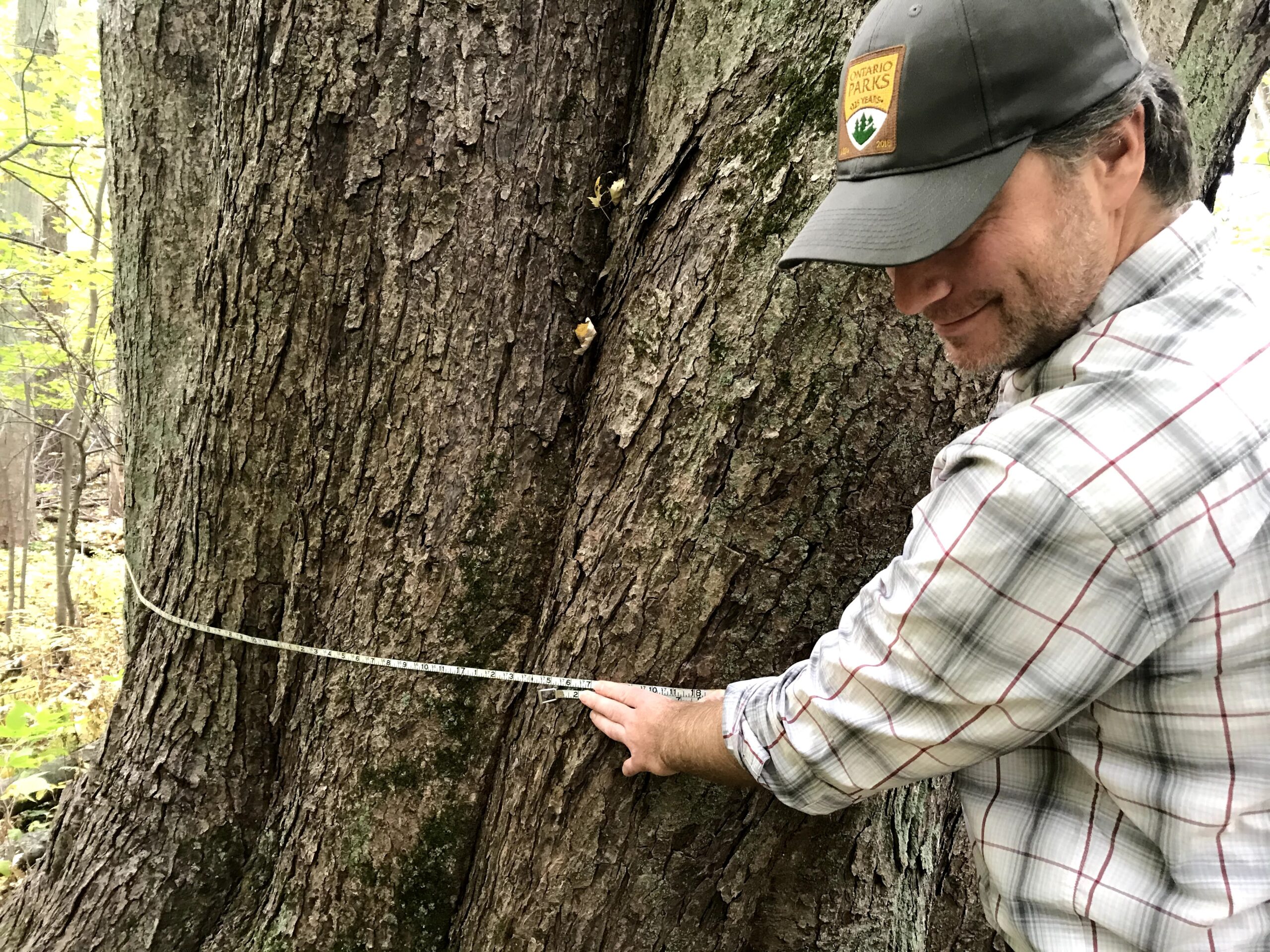
|
Grade 11 –
Science – Biology -Diversity of Living Things / Classification
Program: Classification
Similar to the grade 9 aquatic ecology. Students collect living things from Golden Pond, describing their physical appearance and then use this information to create their own dichotomous key. We focus on macro or microscopic invertebrates (depending on the time of year). We discuss as a group relevant environmental issues that threaten biodiversity and possible solutions. *If you would prefer to have your students use microscopes and examine microscopic invertebrates please ask for this in the comments section of your request.
SVN 3M/3E – Environmental Science / CGR 4E – Living in a Sustainable World/ CGR 4M – The Environment and Resource Management
Program: Resource Management (Sustainable Forestry)
Students learn to identify local tree species and their uses as well as compare the structure, function and productivity of two forest types (Uneven aged deciduous and even aged coniferous). Students complete a variable plot survey assessing the commercial and ecological values of each forest while learning to use common forestry tools (Biltmore sticks, wedge prisms, clinometers). Using the information collected students design a management plan that allows for sustainable use of the forest. |
Grade 12 –
Science – Biology – Diversity of Living Things / Population Dynamics
Program: Population Ecology
Students participate in a bird banding demonstration, a method used to track changes in bird populations around the world. We then observe a wild population of banded birds and estimate local populations of Black-capped Chickadees using Mark/Recapture calculations. As part of this activity we introduce students to the importance of monitoring declining populations and extinctions. |
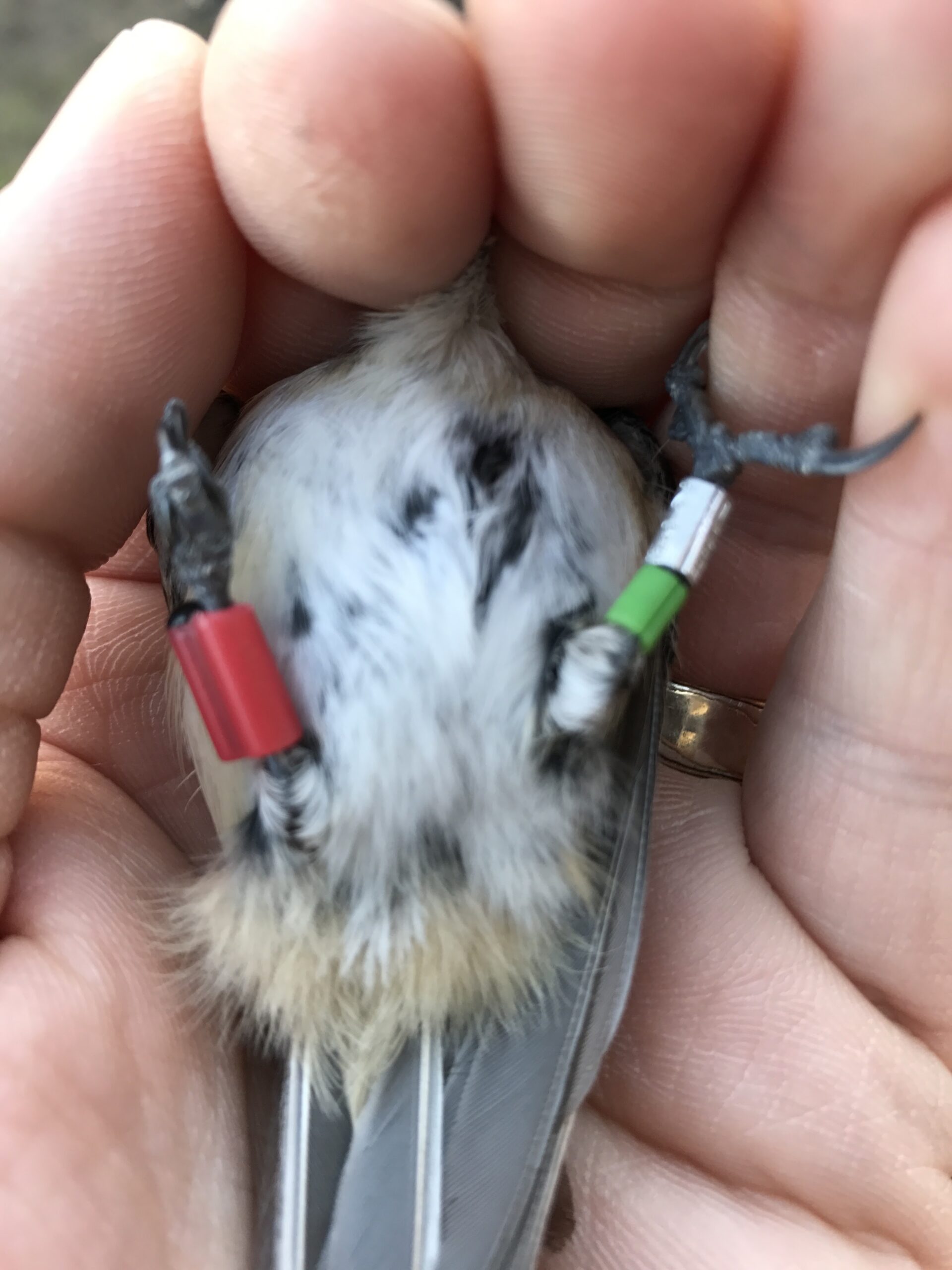 |
|
|
